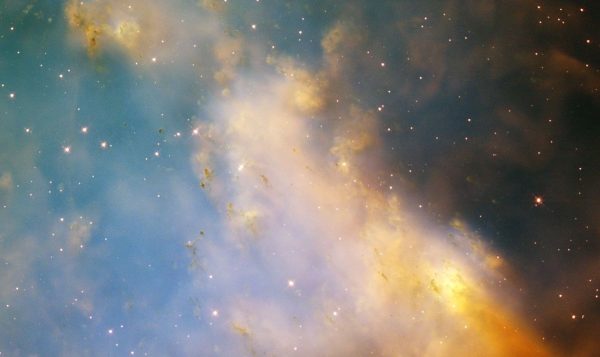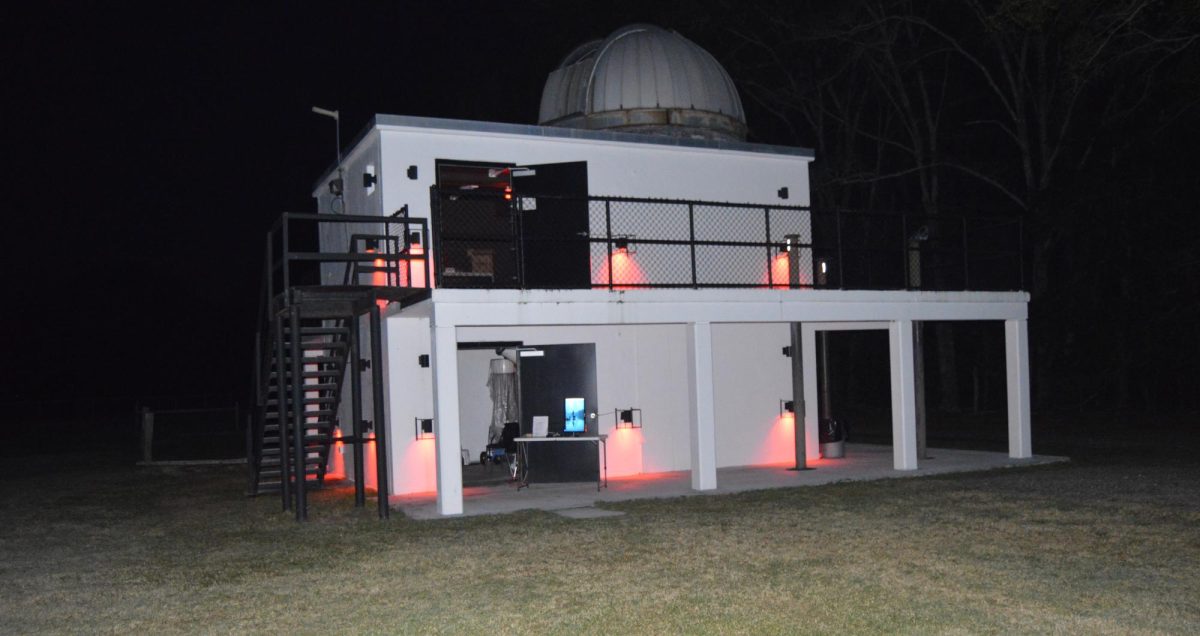Students at Francis Marion University, or those simply interested in viewing the stars, did so on on Saturday, Oct. 18, at the FMU Observatory located behind the Smith University Center (UC). The viewing time was open to the public between 7:00 to 10:00 p.m.
The event was hosted by Professor of Astronomy and Director of Dooley Planetarium Jeannette Myers and two students assisting her, Austin Coleman and Sidney Isenberg.
To view the stars, guests could use the following devices provided by the directors:
- Schmidt-Cassegrain Telescope
- Dobsonian Telescope
- Binoculars
The Dobsonian telescope that was placed outside the observatory was used to view Saturn. Interestingly, Saturn viewed through the telescope showed the planet with its rings going vertically, instead of horizontally. Coleman and Isenberg also helped those who were having trouble viewing the sky with the Dobsonian, as well as readjusting it as needed.
Using the Schmidt-Cassegrain telescope required the user to be inside of the observatory, under the supervision of Myers. Compared to the Dobsonian, one feature of the Schmidt-Cassegrain is to utilize a Global Positioning System (GPS). The telescope was used to view the Dumbbell Nebula. The nebula, which had blown all of its stars off, gained its name due to the gas shape resembling a dumbbell. It is also named the Messier 27 or M27.

Unique also to the Schmidt-Cassegrain, is it having a camera placed inside it. When the camera is operating, a monitor screen that was outside of the observatory would show what the telescope was seeing for others to view.
The binoculars, however, were just regular binoculars. Despite that, they could still be used to view the stars, just at a vastly reduced distance compared to the other telescopes.
As the event was open to the public, there were many different assortments of people present. Mothers and fathers were present with their children, allowing them to indulge in their interest in astronomy. Student couples also saw a prominent presence in the crowd, as well as students coming to the event to learn more for their current classes.
Because of the night sky, it was advised for phone flashes and flashlights to be turned off to avoid harming someone’s eyes. An alternative to this was using glow sticks the hosts provided, which many of the children were seen using while running around in the field.
A brochure was also provided dictating future dates and names of observatory viewings. This event in particular, was titled “Saturn, Deep Sky Objects.”
To reach the observatory for FMU’s next Star Party, head towards the UC and go behind it, passing the soccer field and continuing down past the softball field. It is easily identifiable with its white color and dome standing out on top.
Before the event closed, it was seen that there was a lot of traction from more of those that did not go to FMU, compared to those that did. Despite it being cold outside, the vibes were warm enough to keep everyone present in a positive mood, many of those giving their thanks as they left.
For more information on FMU’s next Star Party, students are advised to contact Myers via email or visit FMU’s event calendar.
